Splash Screen
Chapter Introduction
Section 1: Early Civilizations in India
Section 2: New Empires in India
Section 3: Early Chinese
Civilizations
Section 4: Rise and Fall of Chinese Empires
Visual Summary
Chapter Menu
In 1819 a hunting party stumbled upon the hidden caves of Ajanta. From about 200 B.C. to A.D. 650, Buddhist monks excavated 32 caves and carved stairs, columns, and sculptures into the cliffs. By oil lamp, they painted the life of the Buddha as well as scenes from nature and daily life. In this chapter you will learn about ancient India and China.
• How would the caves’ isolation have
helped preserve them?
• Why are buildings abandoned in your
area? What happens to them?
Chapter Intro
How can location protect historical artifacts?
Chapter Intro
Chapter Intro
Early Civilizations in India
What geographic factors do you think influenced the development of Indian civilizations?
Chapter Intro 1
New Empires in India
What do you think helped bring about early empires in India?
Chapter Intro 2
Early Chinese Civilizations
Why did Chinese civilizations develop in river valleys?
Chapter Intro 3
Rise and Fall of Chinese Empires
Why were government and social structure important to early Chinese dynasties?
Chapter Intro 4
Chapter Preview-End
The BIG Idea
Physical Geography Major changes in India’s culture began around 1800 B.C.
Section 1-Main Idea
•
• monsoon
reincarnation
• karma
• Sanskrit
• dharma
• caste
• Buddhism
• varnas
• Hinduism
• nirvana
• yoga
Section 1-Key Terms
Content Vocabulary
•
• via
reveal
Academic Vocabulary
• Himalaya
• Mohenjo Daro
•
Indus River
• Aryans
• Harappa
• Siddhārtha Gautama
Section 1-Key Terms
People and Places
Do you think that climate plays a significant role in the way your community has developed?
A. Yes
B. No
A. A B. B
0%
0%
Section 1-Polling Question
The Impact of Geography
India’s mountains and location have played an important part in the development of the Indian subcontinent. Monsoons coming from the north and the south bring moisture to the farmers who live there.
Section 1
The Impact of Geography (cont.)
• India’s mountains and location have played a
key role in the development of the subcontinent.
• To the north are the Himalayas, the highest
mountains in the world.
Section 1
• To the west is the Indus River valley. Indian civilization began in this rich valley, but it is now a relatively dry plateau that forms the backbone of the modern state of Pakistan.
The Impact of Geography (cont.)
• India’s climate is dominated by the
monsoon, a seasonal wind pattern in southern Asia.
• Indian farmers are dependent upon the rainfall brought by the monsoon season.
The Impact of Geography
Section 1
How does the monsoon affect Indian farmers?
A. It allows them to ship crops to markets in the east.
B. It allows them to ship crops to markets in the west.
0%
0%
0%
C. It brings the rain necessary for the cultivation of crops.
Section 1
A. A B. B 0% C. C D. D D. It protects farmers from foreign invaders.
Indus Valley Civilization
The cities of the Indus Valley civilization were well planned and very advanced.
Section 1
Indus Valley Civilization (cont.)
• Between 3000 B.C. and 1500 B.C. the Indus
River valley supported advanced civilizations that lived in the cities of Harappa and Mohenjo Daro.
• The two cities were carefully structured and each supported populations of 35,000 to 40,000.
• Houses varied in size, but had the same plan
of a courtyard surrounded by rooms.
Indus Civilization and Trade
Section 1
Indus Valley Civilization (cont.)
• In Indus civilization, religion and political
power were closely linked. The royal palace and the holy temple were combined in a citadel, or fort.
• Although farming was the basis of the
Section 1
economy, merchants in the Indus Valley traded copper, precious stones, and cotton with Mesopotamia on ships via the Persian Gulf.
Which of the following indicates there were well-organized governments in Harappa and Mohenjo Daro?
A. The monsoon helped farmers
to grow crops.
B. Religion and politics were
closely linked.
0%
0%
0%
0%
C. Most buildings were constructed
of oven-baked mud bricks.
A. A B. B C. C D. D
D. The cities had systems to deal with wastewater, garbage collection, and freshwater.
Section 1
Migration and Interaction
Around 1500 B.C., India’s culture changed, and the Indus Valley cities were abandoned.
Section 1
Migration and Interaction (cont.)
• Around 2000 B.C. the Aryans moved into the Indus Valley. The Aryans were a nomadic Indo-European people from central Asia who eventually gained political control throughout India.
• Around 1000 B.C., the Aryans started to write
in Sanskrit.
• Early writings reveal that between 1500 B.C.
Section 1
and 400 B.C. India was a land of small kingdoms ruled by rajas princes that often fought with each other.
Migration and Interaction (cont.)
• The society was patriarchal, as evidenced by the ritual of suttee, in which the wife throws herself on her deceased husband’s burning funeral pyre.
• The social structure of ancient India was
divided into four varnas:
– Brahmins: priests, teachers
– Kshatriyas: warriors, police
Changes in India’s Civilization
Section 1
Migration and Interaction (cont.)
– Vaisyas: merchants, farmers, commoners
– Sudras: peasants, servants
• Over the centuries, a rigid social structure known as the caste system developed.
• The caste system determined what jobs people could have, and whom they could marry or socialize with.
Changes in India’s Civilization
Section 1
Which of the following shows the hierarchy of the varnas of ancient Indian society?
A. Brahmins, Kshatriyas,
Vaisyas, Sudras
B. Kshatriyas, Brahmins,
Sudras, Vaisyas
0%
0%
0%
0%
C. Vaisyas, Sudras,
Kshatriyas, Brahmins
Section 1
A. A B. B C. C D. D D. Sudras, Brahmins, Vaisyas, Kshatriyas
Religions of India
Hinduism and Buddhism share some common beliefs.
Section 1
Religions of India (cont.)
• Two of the world’s great religions, Hinduism
and Buddhism, began in India.
• Hinduism
– Originated with the Aryan peoples who
settled in India.
– Early Hindus believed in a single force, or
universal spirit, called Brahman.
– Hindus achieve oneness with God through
Section 1
the practice of yoga.
Religions of India (cont.)
– The three physical forms of Hinduism are
Brahma the Creator, Vishnu the Preserver, and Shiva the Destroyer.
• By the sixth century, the idea of
reincarnation had appeared in Hinduism.
• Important in the process of reincarnation is
Section 1
the idea of karma. Karma is ruled by dharma, or divine law ,which requires all people to do their duty.
Religions of India (cont.)
• Buddhism
– Originated in the sixth century B.C. in
northern India.
– Founded by Siddhārtha Gautama, who
was known as the Buddha, or the “Enlightened One.”
Section 1
– Buddhists believe that by letting go of physical possessions, wisdom can be gained.
Religions of India (cont.)
– Achieving wisdom is the key step to
achieving nirvana.
• Siddhārtha Gautama was a young prince who grew increasingly unhappy with his life of luxury.
Section 1
• After many attempts, he reached enlightenment during meditation.
Religions of India (cont.)
Section 1
• He forbade his followers to worship his image or other gods; for this reason, Buddhism is sometimes seen as a philosophy, and not a religion.
Which statement is most accurate about Buddhism?
A. It was started by the Aryans before they reached the Indus Valley.
B. It does not praise a god
or a prophet.
0%
0%
C. It called for war against
Hinduism.
A. A B. B 0% 0% C. C D. D
D. It is open only to people in the highest castes.
Section 1
Section 1-End
The BIG Idea
Ideas, Beliefs, and Values New Indian empires grew rich through trade and left a lasting legacy of accomplishments.
Section 2-Main Idea
• Silk Road
• Vedas
• pilgrims
• Bhagavad Gita
Content Vocabulary
• conversion
• welfare
Section 2-Key Terms
Academic Vocabulary
• Aśoka
• Faxian
• Kālidāsa
• Āryabhata
Section 2-Key Terms
People
Do you agree or disagree that a ruler who is feared is more effective than a ruler who is loved?
A. Agree
B. Disagree
A. A B. B
0%
0%
Section 2-Polling Question
Three New Empires
Warring kingdoms united to force out invaders, which led to three Indian empires.
Section 2
Three New Empires (cont.)
• The Mauryan Empire was founded by
Chandragupta Maurya in 324 B.C. This Indian Empire was a highly centralized state, and governors ruled its many provinces.
• Aśoka, the grandson of Chandragupta
Maurya, is generally considered the greatest ruler in the history of India. After his conversion to Buddhism, he used Buddhist ideals to guide his rule.
Three Indian Empires
Section 2
Three New Empires (cont.)
• Aśoka set up hospitals for the welfare of both people and animals. He ordered shelters and trees be placed along roads, and commerce increased in the empire.
• The Kushān Empire rose to power when
Section 2
nomadic warriors seized power in the first century A.D.
Three New Empires (cont.)
• The Kushāns grew wealthy from trade,
specifically from travel on the Silk Road which stretched from the Pacific Ocean to the Mediterranean Sea.
• In A.D. 320, the Gupta Empire was formed by Candra Gupta in the Ganges Valley. Due to good leadership, the Gupta Empire created a new age of Indian civilization.
Trade Routes of the Ancient World
Section 2
Three New Empires (cont.)
• The Gupta Empire actively engaged in trade
with China and other states in southeast Asia and the Mediterranean region. Domestic trade of salt, cloth, and iron increased, and cities along the trade routes prospered.
• Much of their wealth came from pilgrims
Section 2
who came from all over India and China to visit the major religious centers.
Three New Empires (cont.)
• Faxian spent several years in the Gupta
Empire, and wrote of the Gupta rulers, their practice of Buddhism, and the prosperity of the empire.
• In the late fifth century A.D., Huns from the
Section 2
northwest attacked the empire, weakening it. In the middle of the seventh century, the empire collapsed, and north India would not be reunited for centuries.
What influence guided the decisions of the Indian ruler Aśoka?
A. Buddhism
B. His grandfather
C. His army
D. Hinduism
0%
0%
Section 2
A. A B. B C. C 0% 0% D. D
Indian Accomplishments
India produced great works in almost all cultural fields, including literature, architecture, and science.
Section 2
Indian Accomplishments (cont.)
• The Vedas were recorded in Sanskrit and contained religious chants and stories.
• India’s great epics, the Mahabharata and Ramayana, tell of the legendary deeds of Great Indian warriors.
– The most famous section of the book,
Section 2
called the Bhagavad Gita, is a sermon by the god Krishna on the eve of a major battle.
Indian Accomplishments (cont.)
• One of the most popular Sanskrit poems, The Cloud Messenger, was written by the Gupta era poet Kālidāsa.
• Indian architecture was influenced by Buddhism. The three main types of structures were religious in nature, and were the pillar, stupa, and rock chamber.
• Āryabhata was a famous mathematician of
Section 2
the Gupta Empire who used algebra.
Indian Accomplishments (cont.)
Section 2
• Indian mathematicians also introduced the concept of the zero, and used a symbol (0) for it. This numerical system—the Indian-Arabic numerical system—was adopted by Arab scholars, and eventually by Europeans.
What were recorded in the Vedas?
A. The laws of Aśoka
B. Religious chants
and stories
C. Stories written about
Indian warriors
0%
0%
D. Sanskrit poetry
Section 2
A. A B. B C. C 0% 0% D. D
Section 2-End
The BIG Idea
Ideas, Beliefs, and Values China developed unique philosophies, political theories, and products.
Section 3-Main Idea
• aristocracy
• pictographs
•
ideographs
• Mandate of Heaven
• Confucianism
• Dao
• Daoism
•
filial piety
• Legalism
Section 3-Key Terms
Content Vocabulary
• cycle
• ethical
• philosophy
Academic Vocabulary
• Huang He
• Chang Jiang
• Confucius
• Laozi
Section 3-Key Terms
People and Places
Do you think living near mountains is more beneficial to a society than living near an ocean?
A. Yes
B. No
A. A B. B
0%
0%
Section 3-Polling Question
The Impact of Geography
China’s physical geography influenced the location of its early civilizations.
Section 3
The Impact of Geography (cont.)
• Ancient Chinese culture began in the
agriculturally rich valley located between the Huang He (Yellow River) and Chang Jiang (Yangtze River).
• Only ten percent of Chinese land is suitable
Section 3
for farming.
The Impact of Geography (cont.)
• Much of the land in the empire is made up of deserts and mountains, isolating China from other parts of Asia.
• China’s climate varies from region to region
based on monsoons and elevation.
The Impact of Geography on Early Chinese Civilizations
Section 3
Which of the following is the accurate percentage of suitable farming land in all of China?
A. 10%
B. 30%
C. 50%
0%
0%
D. 70%
Section 3
A. A B. B C. C 0% 0% D. D
The Shang Dynasty
Oracle bones, bronzes, and excavations tell about life during the Shang dynasty.
Section 3
The Shang Dynasty (cont.)
• The first Chinese civilization, the Xia
dynasty, dates back to 4000 B.C.
• The Shang dynasty (1750 B.C.–1045 B.C.) was
an agricultural society ruled by an aristocracy.
• Politically, the Shang king ruled from the
capital city at Anyang.
Shang and Zhou Dynasties
Section 3
The Shang Dynasty (cont.)
• Aristocratic landowners waged war and
controlled territories for the king.
• Although most of the people of the empire
were peasants who farmed the aristocracy’s land, Shang society also included artisans, merchants, and slaves.
Section 3
• The Chinese believed in supernatural forces, and relied on the priests’ interpretations of oracle bones for advice.
The Shang Dynasty (cont.)
• Bones were heated until they cracked and
were then interpreted by the priests.
• The Shang Chinese are also known for their
Section 3
mastery of bronze casting.
How did the Shang rulers communicate with the gods?
A. Human sacrifice
B. Incense burning
C. Oracle bones
0%
0%
D. Temples of the aristocracy
Section 3
A. A B. B C. C 0% 0% D. D
The Zhou Dynasty
The concept of the Mandate of Heaven began with the Zhou dynasty.
Section 3
The Zhou Dynasty (cont.)
• The Zhou dynasty was the longest lasting dynasty in Chinese history (1045 B.C. to 256 B.C.).
• Although the Zhou dynasty continued the political system of the Shang dynasty, the basic principle of the government was the Mandate of Heaven.
• The king was expected to rule by the Dao. If
Section 3
the King neglected to keep the gods pleased, he could be replaced.
The Zhou Dynasty (cont.)
• The Mandate of Heaven influenced Chinese political history. A pattern of dynastic cycles began; empires ruled until they began to decle and eventually were replaced by new ruling families.
• Poor leadership and a civil war known as the Period of the Warring States ended the Zhou dynasty. The Qin created a new dynasty in 221 B.C.
Dynastic Cycles and the Mandate of Heaven
Section 3
The Zhou Dynasty (cont.)
• At the center of the concept of family in
China was belief in filial piety. Every family member had his or her own place, and subordinated his or her needs to that of the head male of the house.
• Male supremacy was a key element in the
Section 3
social system of China.
The Zhou Dynasty (cont.)
• Major advancements were made under Zhou
leadership:
– Irrigation and iron tools increased food
production dramatically.
– Chinese silk was an important element of
trade and was found as far away as Greece.
Section 3
– The Chinese created their own written language based on pictographs and ideographs.
What influenced the dynastic cycles of empires in China?
A. The Mandate of Heaven
B. Pictographs
C. Filial piety
D. Aristocracy
0%
0%
Section 3
A. A B. B C. C 0% 0% D. D
Chinese Philosophy
Chinese philosophers emphasized stability and order in society.
Section 3
Chinese Philosophy (cont.)
• Confucianism is a system of political and ethical ideas intended to help restore order.
– Confucius was a philosopher who lived in a time of chaos and war. His ideas became a widely accepted philosophy that was studied by Chinese students.
– Confucius’s ideas were not spiritual, but
political and ethical.
– The two most significant elements of
Section 3
Confucianism were duty and humanity.
Chinese Philosophy (cont.)
• Daoism teaches that the will of Heaven is
best followed through inaction so that nature is allowed to take its course.
– According to tradition, Daoism is based on the teachings of Laozi, the Old Master.
– Daoism is based on the belief that
Section 3
harmony with the universal order can be achieved by not interfering with the natural order of the world.
Chinese Philosophy (cont.)
• Legalism was the third popular philosophy
of ancient China.
– Legalism proposed that human beings
were evil by nature.
– Legalists believed that a strong ruler was
needed for an orderly society.
Section 3
– To Legalists, harsh laws and strict control of the people would cause commoners to serve the interests of the ruler.
Which of the following was not a popular philosophy in early China?
A. Legalism
B. Daoism
C. Confucianism
D. Laozism
0%
0%
Section 3
A. A B. B C. C 0% 0% D. D
Section 3-End
The BIG Idea
Order and Security The Qin and Han dynasties established strong central governments that were the basis for future dynasties.
Section 4-Main Idea
•
regime
• censorate
Content Vocabulary
•
•
individuality
instituted
•
ideology
Section 4-Key Terms
Academic Vocabulary
• Qin Shihuangdi
• Gobi
• Xiongnu
• Liu Pang
• Han Wudi
• South China Sea
Section 4-Key Terms
People and Places
Do you agree or disagree that the strongest empires in the world have been ruled by repressive leaders?
A. Agree
B. Disagree
A. A B. B
0%
0%
Section 4-Polling Question
The Qin Dynasty
Qin Shihuangdi unified the Chinese world using force against invaders and harsh treatment of his subjects.
Section 4
The Qin Dynasty (cont.)
• In 221 B.C., the Qin dynasty was founded by
Qin Shihuangdi. He created a single monetary system and built roads throughout the empire.
Section 4
• Qin Shihuangdi extended his borders by using his military forces. To supply his armies, he built a canal from central to southern China.
The Qin Dynasty (cont.)
• In 1974, farmers digging a well near Xi’an unearthed a pit of more than 6000 clay soldiers. Each figure exhibits the individuality of Qin Shihuangdi’s real soldiers.
• To prevent incursions from the nomadic
peoples of the Gobi region, Qin Shihuangdi started construction of the Great Wall.
China
Section 4
The Qin Dynasty (cont.)
• These nomads, known as the Xiongnu to Chinese, were fierce warriors who rode horses.
Section 4
• The Qin dynasty dramatically changed Chinese politics, and Qin Shihuangdi instituted forced labor projects, higher taxes, and censorship of speech.
The Qin Dynasty (cont.)
• The official ideology of the regime was Legalism. A censorate was created to ensure that government officials were doing their jobs.
• The Qin dynasty would be overthrown
following Qin Shihuangdi’s death in 210 B.C., due to the emperor’s harsh policies.
Building the Great Wall
Section 4
How did Qin Shihuangdi impact the Chinese political system?
A. He forced all government officials to join the army.
B. He created an administration
to inspect the jobs of government officials.
0%
0%
0%
0%
C. He allowed women to vote.
D. He made Buddhism the official religion
of the state.
A. A B. B C. C D. D
Section 4
The Han Dynasty
The Han dynasty refined the political structures of the Qin.
Section 4
The Han Dynasty (cont.)
• Liu Pang, a peasant by birth, created the
Han dynasty, which is considered one of the greatest dynasties in Chinese history.
• Han rulers continued the Qin system of choosing government officials based on merit rather than birth.
• The Han introduced civil service exams and
a school to train candidates.
Qin and Han Dynasties
Section 4
The Han Dynasty (cont.)
• Han Wudi extended the empire by adding area in south Asia along the South China Sea.
• New technologies in textile manufacturing,
water mills for grinding grain, and iron casting added to the economic prosperity of the Han empire.
• Steel was invented and paper was developed during the Han reign.
Qin and Han Dynasties
Section 4
The Han Dynasty (cont.)
• Ships using rudders enabled Chinese merchant ships to sail into the wind.
• The Han dynasty collapsed in A.D. 220
Section 4
due to weak rulers, official corruption, and an uneven distribution of land. The next great dynasty would not arise for 400 years.
What new technologies were developed during the Han era?
A. Porcelain and terra-cotta
B. Bronze and silk
C. Paper currency and
oil drilling
0%
0%
0%
0%
D. Paper and the invention
of steel
A. A B. B C. C D. D
Section 4
Section 4-End
VS 1
VS 2
VS 3
VS 4
VS-End
Figure 1
Figure 1a
Figure 2
Figure 3
Figure 4
Figure 5
Figure 6
Figure 7
Figure 8
Figure 8
Figure 9
Figure 10
Figure 11
Chapter Transparencies Menu
Chapter Transparency
Unit Time Line Transparency
Select a transparency to view.
Chapter Trans Menu
Cause-and-Effect Transparency
Chapter Trans
Unit Timeline Trans
CnETrans
DFS Trans 1
DFS Trans 2
DFS Trans 3
DFS Trans 4
monsoon
Vocab1
a seasonal wind pattern in southern Asia that blows warm, moist air from the southwest during the summer, bringing heavy rains, and cold, dry air from the northeast during the winter
Sanskrit
Vocab2
the first writing system of the Aryans, developed around 1000 B.C.
caste
Vocab3
a set of rigid categories in ancient India that determined a person’s occupation and economic potential, as well as his or her position in society, based partly on skin color
varnas
Vocab4
social groups that rank people from high to low
Hinduism
Vocab5
the major Indian religious system, which had its origins in the religious beliefs of the Aryans who settled India after 1500 B.C.
yoga
Vocab6
a method of training developed by the Hindus that is supposed to lead to oneness with God
reincarnation
Vocab7
the rebirth of an individual’s soul in a different form after death
karma
Vocab8
in Hinduism, the force generated by a person’s actions that determines how the person will be reborn in the next life
dharma
Vocab9
in Hinduism, the divine law that rules karma; it requires all people to do their duty based on their status in society
Buddhism
Vocab10
a religious doctrine introduced in northern India in the sixth century B.C. by Siddhārtha Gautama, known as the Buddha, or “Enlightened One”
nirvana
Vocab11
in Buddhism, ultimate reality, the end of the self and a reunion with the Great World Soul
via
Vocab12
by way of
reveal
Vocab13
show; to make known
Silk Road
Vocab14
a route between the Roman Empire and China, so called because silk was China’s most valuable product
pilgrim
Vocab15
a person who travels to a shrine or other holy place
Vedas
Vocab16
the earliest known Indian literature, which contain religious chants and stories that were originally passed down orally from generation to generation and then recorded in Sanskrit after writing developed
Bhagavad Gita, The
Vocab17
part of the Indian epic Mahabharata; the Gita, a sermon by the god Krishna on the eve of a major battle, sets forth one key point of Indian culture—one must not worry about the success or failure of an action but should only be aware of the moral rightness of the act itself
conversion
Vocab18
the change from one belief or form to another
welfare
Vocab19
well-being
aristocracy
Vocab20
an upper class whose wealth is based on land and whose power is passed on from one generation to another
Mandate of Heaven
Vocab21
claim by Chinese kings of the Zhou dynasty that they had direct authority from heaven to rule and to keep order in the universe
Dao
Vocab22
“Way,” the key to proper behavior under Confucianism
filial piety
Vocab23
the duty of family members to subordinate their needs and desires to those of the male head of the family, a concept important in Confucianism
pictograph
Vocab24
a picture symbol, or character, that represents an object; used in ancient Chinese script
ideograph
Vocab25
a character that combines two or more pictographs to represent an idea; used in ancient Chinese script
Confucianism
Vocab26
the system of political and ethical ideas formulated by the Chinese philosopher Confucius toward the end of the Zhou dynasty; it was intended to help restore order to a society that was in a state of confusion
Daoism
Vocab27
a system of ideas based on the teachings of Laozi; teaches that the will of Heaven is best followed through inaction so that nature is allowed to take its course
Legalism
Vocab28
a popular philosophy developed in China toward the end of the Zhou dynasty; it proposes that human beings are evil by nature and can be brought to the correct path only by harsh laws
cycle
Vocab29
a series of events that recur regularly and usually lead back to the starting point
philosophy
Vocab30
an organized system of thought, from the Greek for “love of wisdom”
ethical
Vocab31
conforming to accepted standards of conduct; moral
regime
Vocab32
the government in power
censorate
Vocab33
part of the Chinese bureaucracy that made sure government officials were doing their jobs
individuality
Vocab34
a total character that distinguishes an individual from others
ideology
Vocab35
a set of beliefs
instituted
Vocab36
put into action
To use this Presentation Plus! product:
Click the Forward button to go to the next slide.
Click the Previous button to return to the previous slide.
Click the Home button to return to the Chapter Menu.
Click the Transparency button from the Chapter Menu, Chapter Introduction slides, or Visual Summary slides to access the transparencies that are relevant to this chapter. From within a section, click on this button to access the relevant Daily Focus Skills Transparency.
Click the Return button in a feature to return to the main presentation.
Click the History Online button to access online textbook features.
Click the Reference Atlas button to access the Interactive Reference Atlas.
Click the Exit button or press the Escape key [Esc] to end the slide show.
Click the Help button to access this screen.
Links to Presentation Plus! features such as Maps in Motion, Graphs in Motion, Charts in Motion, Concepts in Motion, and figures from your textbook are located at the bottom of relevant screens.
Help
This slide is intentionally blank.
End of Custom Shows



![Bài giảng Lịch sử thế giới trung đại [mới nhất]](https://cdn.tailieu.vn/images/document/thumbnail/2025/20250506/vinarutobi/135x160/4361746531976.jpg)
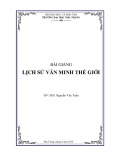
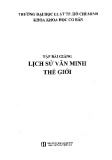

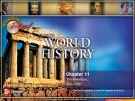
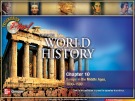
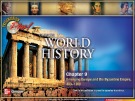
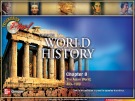
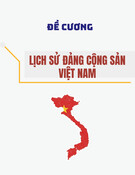
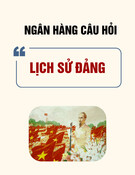

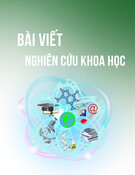





![Giáo trình Tổ chức và Quản lý Hoạt động Văn hóa Thông tin Cơ sở (Ngành Quản lý Văn hóa - Trung cấp) - Trường Trung cấp Mỹ thuật - Văn hóa Bình Dương [Mới nhất]](https://cdn.tailieu.vn/images/document/thumbnail/2025/20251110/kimphuong1001/135x160/17861762748492.jpg)





